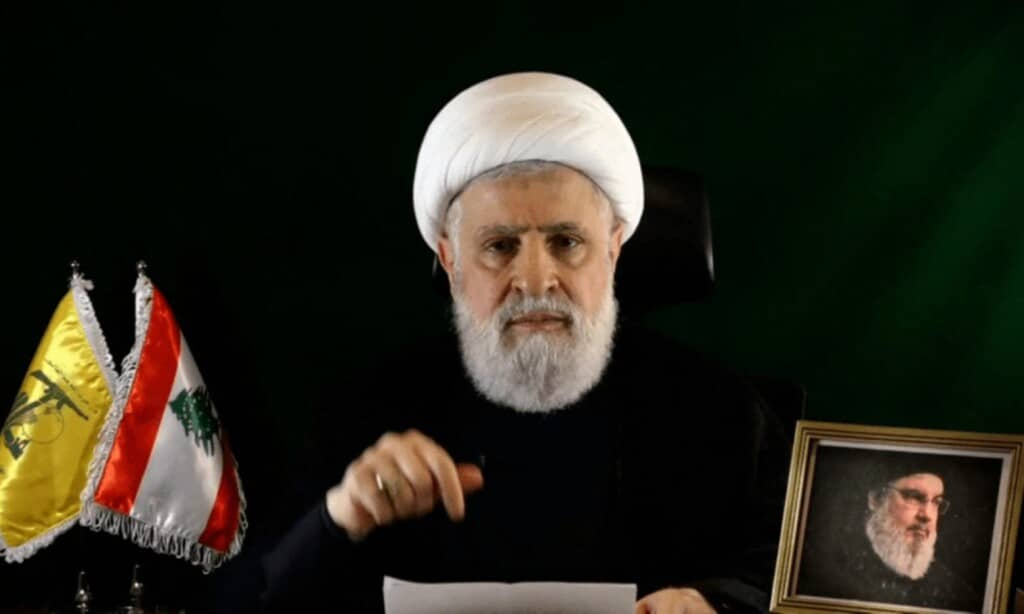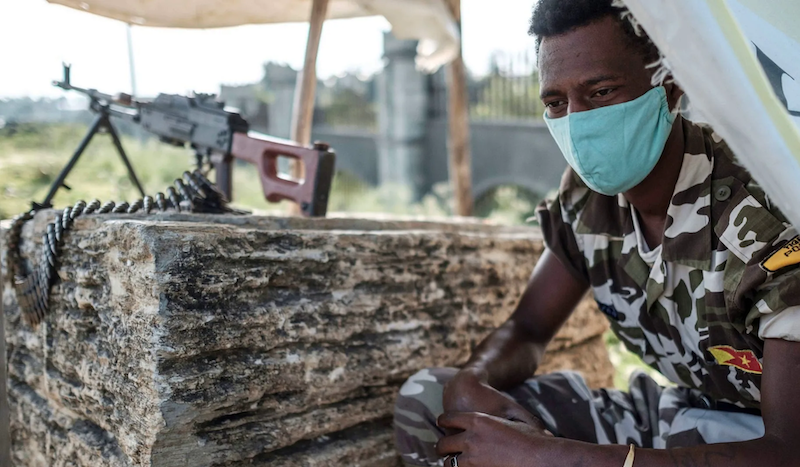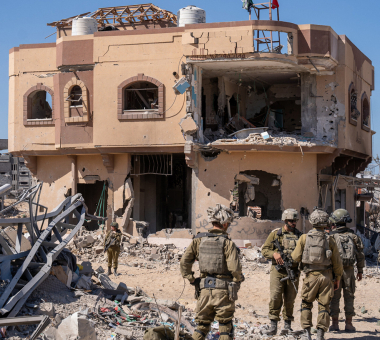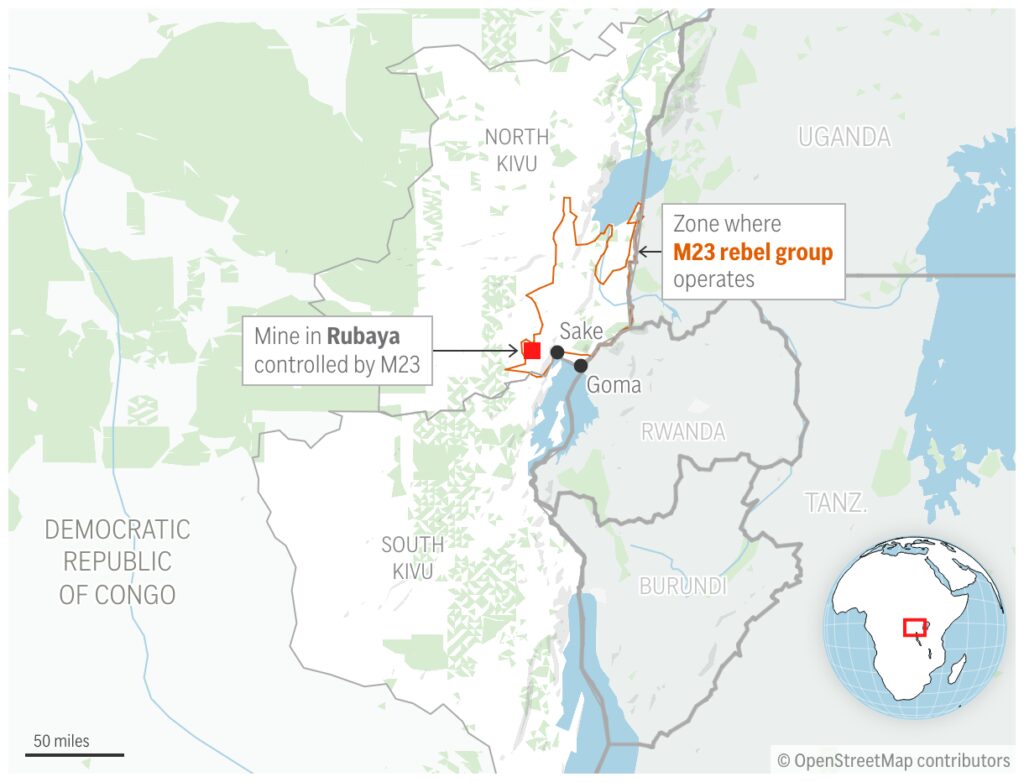Naim Qassem vows Hezbollah will continue fighting

Naim Qassem, newly appointed as Hezbollah’s secretary-general, has become the centerpiece of the group’s narrative efforts. On October 15, as then-deputy secretary-general, he gave his third speech after Secretary-General Hassan Nasrallah’s assassination, amidst rumors he had fled Lebanon to Iran.
Against a dark and nondescript backdrop—perhaps to signify Hezbollah mourning its fallen leaders, particularly Nasrallah—and flanked by a Hezbollah flag and, unusually, a Lebanese flag on his right and a picture of Nasrallah to his left, Qassem delivered his most defiant speech yet. As with Nasrallah’s speeches, the themes and tropes raised by Qassem were then echoed and amplified by the group’s officials and media apparatuses.








